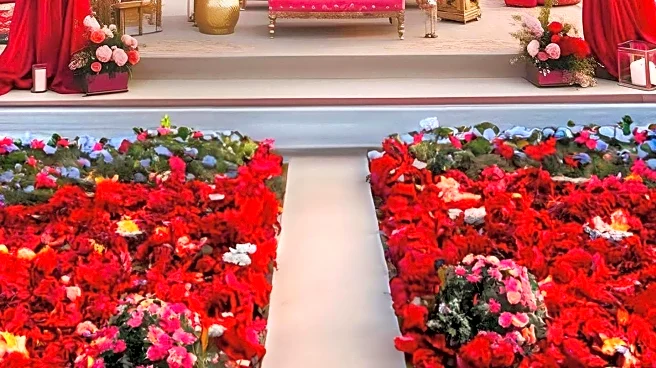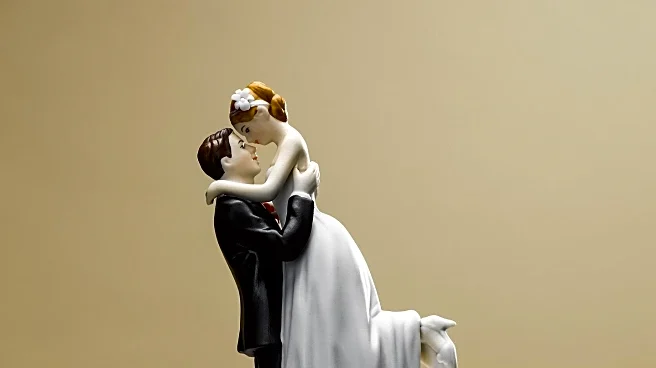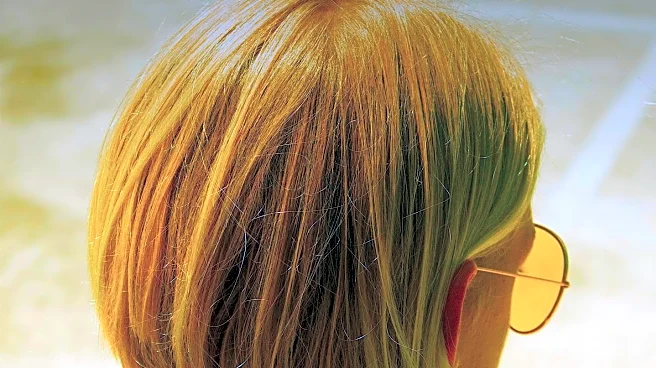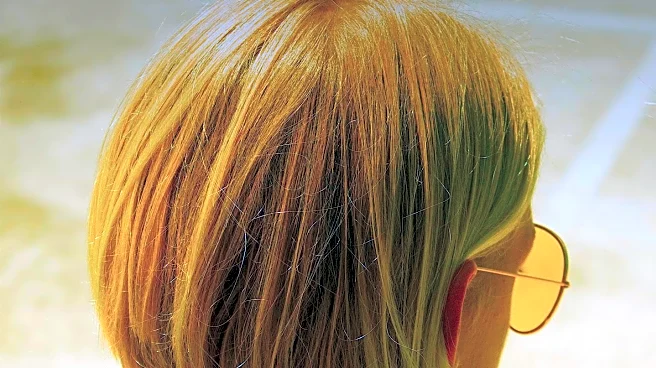What's Happening?
Robin 'Birdie' Yarusso, a wedding planner with over 20 years of experience, has identified several wedding trends and traditions that are falling out of favor. Among these are the use of burlap for decor, which was once popular for creating a rustic vibe. Yarusso advises against this, stating, 'Burlap is done. Please, please let it go.' Additionally, discussions on Reddit's r/weddingplanning forum reveal a growing disinterest in cursive minimal signage, beige/white/tan color schemes, and eucalyptus designs. Fashion trends such as mismatched floral bridesmaid dresses and drop/baroque waist wedding dresses are also being reconsidered. Traditional practices like the dollar dance and garter toss are becoming less common, and there is a shift away from parents funding weddings, particularly from the groom's side. The cost of weddings in New Jersey, averaging $70,600, makes it the second-most expensive state for weddings in the U.S.
Why It's Important?
The shift in wedding trends and traditions reflects broader changes in societal values and economic considerations. As couples seek more personalized and meaningful ceremonies, they are moving away from outdated practices that may not resonate with their personal tastes or financial realities. The decline in traditional funding methods, such as parents paying for weddings, indicates a shift towards financial independence and shared responsibility between couples. This evolution in wedding planning can impact related industries, including fashion, event planning, and hospitality, as they adapt to new consumer preferences. The high cost of weddings in states like New Jersey highlights economic disparities and may influence where couples choose to marry, potentially affecting local economies.
What's Next?
As these trends continue to evolve, wedding planners and related industries may need to innovate and offer new solutions that align with modern preferences. Couples might increasingly seek cost-effective alternatives or unique venues that reflect their personal style. The industry could see a rise in demand for sustainable and eco-friendly options as part of this shift. Additionally, discussions around wedding funding may lead to new financial products or services tailored to couples planning their ceremonies. Stakeholders in the wedding industry will likely monitor these changes closely to remain competitive and relevant.
Beyond the Headlines
The move away from traditional wedding practices may also reflect changing cultural norms around marriage and family roles. As couples prioritize individuality and authenticity, weddings may become more diverse in style and format, challenging conventional expectations. This could lead to broader acceptance of non-traditional ceremonies and a reevaluation of what constitutes a 'successful' wedding. The financial aspect, particularly the high costs in certain states, may prompt discussions on economic inequality and accessibility within the wedding industry.










